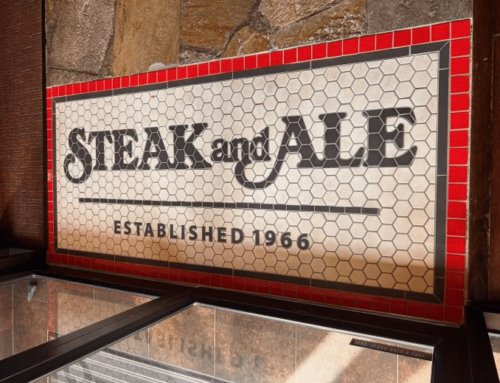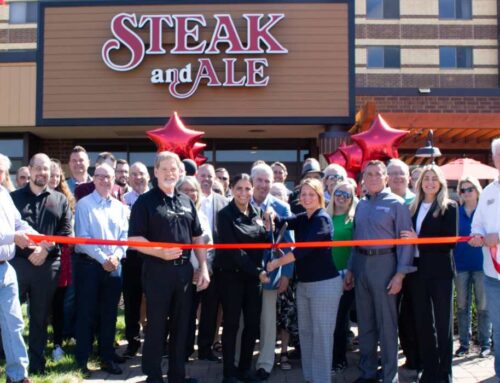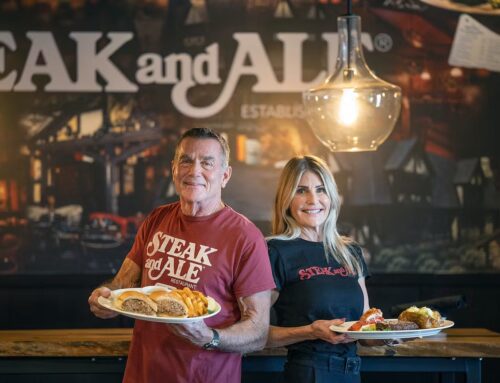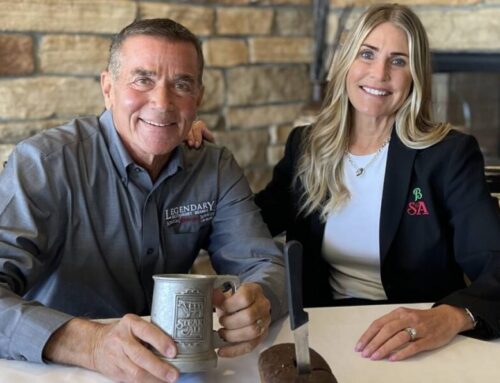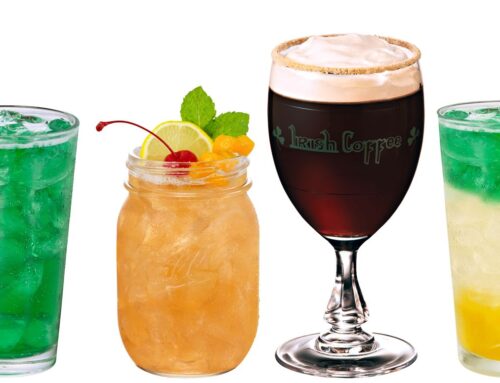AND THE LEGENDARY CHAIN HAS DONE SO BEFORE.
Bennigan’s CEO Paul Mangiamele doesn’t believe the restaurant industry was overbuilt ahead of COVID-19. It was under-demolished. “There were a lot of restaurants out there that had no business operating as a restaurant, whether it was an independent or a small, mom-and-pop, or a brand that had outlived its shelf life,” he says.
And it should serve as a cautionary tale for casual dining, Mangiamele notes. In the middle part of the decade, the sector faced a crossroads that was really more of a crisis inflection. Industry tracker Black Box Intelligence reported only 34 percent of brands in the category earned positive comparable sales in the third quarter of 2016—a remarkable picture given the corresponding counter-service boom fueled by fast casual’s rise. At that juncture, casual dining rode eight consecutive months of declining sales, with traffic trending down at an increasing rate since the beginning of the previous year. For all of 2015, traffic fell 0.8 percent. It dropped 3 percent the following year. Two of casual dining’s biggest players—Applebee’s and Ruby Tuesday—cut unit counts in the triple-digits.
There are a lot of arguments for what dragged performance, and no sole answer is universal. The fruitless chase to court millennials. Bloated menus, deep discounting, a reliance on LTOs, and, in response, complicated operations extenuated by a tight labor market and understaffing. A lack of innovation and acceptance of off-premises channels, third-party delivery intrusion, technology, marketing mediums with suddenly poor ROI, and other shifts in demographics and consumer behavior. Oversaturation and increased competition from valued-focused and convenience-centric concepts across limited service.
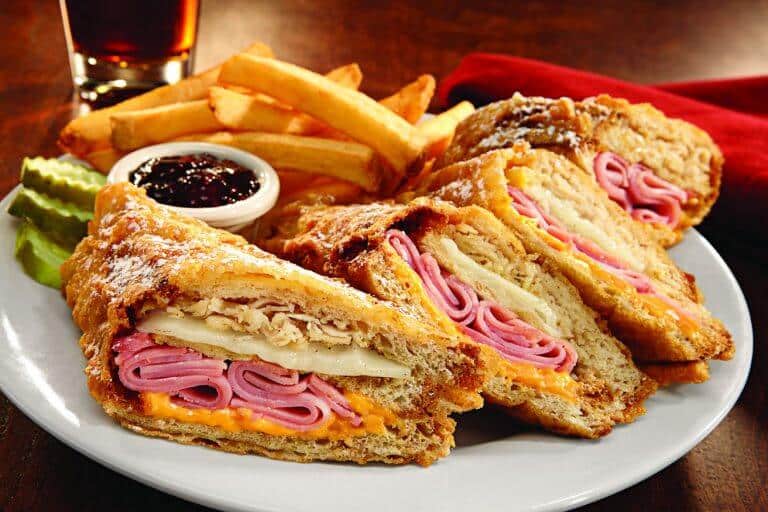
But at the foundational layer, Mangiamele says, casual dining’s crutch was a constantly spinning record: “We’re going back to basics.”
“Well, never leave them,” he says. “Never leave your basics, because it brought you to the party in the first place.”
This is as vivid today as it was five years ago, Mangiamele says. Yet maybe even more dire. And he’s seeing familiar pitfalls in the recovery.
“Those of us in casual dining have to be very, very careful now,” he says. “… There are [brands] cutting back portions, raising prices. And then failing to deliver the value that their brand is supposed to espouse. They’re only going to find themselves in more trouble later on. We will not make that mistake. We have never made that mistake.”
Put simply, don’t panic and change what you stand for. It’s a rallying cry not unlike the one that bannered turnarounds a few years ago, when casual chains of all sizes shed consumers through brand drift—the all-common misstep of trying to be all things to all people, and, in the end, not standing for anything. Chili’s slashed its menu in favor of better operations and core focus, and results followed. Applebee’s lit a fire under value.
“We are trying to be adept at making sure that we are meeting and exceeding the expectations for our core consumer group that love our brands,” Mangiamele says.
COVID-19 accentuated what makes specific restaurants special—it didn’t blur it, he adds, and force an identity pivot. That’s what Bennigan’s, founded in 1976, has witnessed during the four-month-plus crisis to date, he says, and what it’s going to lean into as doors reopen.
Fighting from the ropes is something the Norman Brinker-created brand understands well, too. It was barely left with a pulse in 2008 after a Chapter 7 bankruptcy erased all 150 of Bennigan’s corporate restaurants. The remaining 138 franchises whittled down shortly after, with 70 remaining during proceedings. There are 10 domestic locations today.
However, Mangiamele, a former CEO of Salsarita’s, has been all-in since buying the chain along with Steak and Ale—another Norman Brinker creation that dropped off with the filing—in 2015 with his wife. Atalaya Capital Management, Bennigan’s owner out of bankruptcy, originally brought Mangiamele on to lead a turnaround. Yet he didn’t see Bennigan’s as a short-term project.
He acquired the assets from Fortress Investment Group, which recently purchased CraftWorks for $93 million and Krystal for $48 million. The Mangiameles then formed Legendary Restaurant Brands LLC.
Today, he bleeds green 25/8, as Mangiamele often says. He’s even written a book about it. This kind of chips-on-the-table mindset will be the key, Mangiamele says, for any restaurant—chain or independent—that wants to survive COVID-19.
“If we can make it through a Chapter 7—we have one of the most resilient and iconic brands in foodservice—we can certainty stay relevant through this,” he says.
“You’ve heard me say a million times that culture, people, and passion will beat strategy and tactics every day of the week. And it’s never been more true than right now.”
Bennigan’s signed a franchise agreement in April to bring a Bennigan’s On The Fly (the chain’s fast casual iteration) to Peoria, Arizona. The operator, Leo Nguyen, originally signed with “a distressed burger concept,” Bennigan’s said. And Mangiamele is working with other “abandoned franchisees” left with leases, buildings, and equipment while lacking franchisor support, he said. They can resurrect these assets as Bennigan’s’ properties, whether the traditional model, fast casual, or even Steak and Ale.
“If you’re like me and grew up in the streets of New York, when you get sucker punched you’ve got to be a street fighter,” says Bennigan’s CEO Paul Mangiamele.
In the last few years, Bennigan’s opened new franchises in Melbourne, Florida; Veracruz, Mexico; Larnaca, Cyprus; Doha, Qatar; and Armwaj, Bahrain.
Three recent prototype locations—in Steubenville, Ohio; Mandan, North Dakota; and Monahans, Texas, continue to outperform projections, the company said. These units are about half the size of Bennigan’s typical 10,000-square-foot box.
Mangiamele adds the chain inked a 50-unit deal for the eastern seaboard and has north of 100 locations in some phase of development.
They’ve been “pleasantly surprised,” he says, by the franchising interest in pandemic-challenged months. “We’re almost never been busier,” Mangiamele says.
A lot of these conversations are actually born out of crisis conditions. Conversion opportunities are rampant—just like they were in 2008–2010 from the Great Recession. And parties, entrepreneurs to consumers, are looking for brands that run on loyalty, trust, and familiarity.
“When you’re known for your quality food and made from scratch and people know your food and they’re jonesing for a world-famous Monte Cristo or baby back ribs … we have to make that available to them,” Mangiamele says. In other terms, guests, locked down or not, will seek out what they miss. It’s an era fueled by pent-up demand, not discovery.
Yet Mangiamele knows it’s not quite that simple. COVID-19 arrived at the worst time for Bennigan’s.
When does the chain start preparing for St. Patrick’s Day? “It’s always March 17, right?” Mangiamele says. “We begin for the next year on March 18.”
The chain rented tents. Finished prep. Put advertising in place. But just as it was about “to unleash the kraken of St. Paddy’s Day,” Mangiamele says, Bennigan’s retreated.
Dining rooms across America closed. Venues shifted to takeout, catering, and delivery, and it’s been a mad ride since, from racial protests to looting to new case spikes.
“If you’re like me and grew up in the streets of New York, when you get sucker punched you’ve got to be a street fighter,” he says. “You’ve got to know how to come back from that and get around that, and make sure you’re still providing a safe environment for your team and your guest, but you’re also adapting.”
Bennigan’s formed an internal team to monitor updates, on the local and CDC level. Restrooms are cleaned every 30 minutes. Hand sanitizer is available upon request. Training was reconfigured and is available virtually. The entire corporate team works remote, as they did pre-crisis. Mangiamele says new home-office economics nationwide will provide cost savings for consumers—spending that, in part, could go to dining occasions, whether it’s eating out, delivery, curbside, and so forth.
All of Bennigan’s employees have state-approved food safety handler certification as well. Menus and tabletops are cleaned between use. At the bar, there are markers and Bennigan’s took some stools out. It’s designed so couples could sit together if they wish, but groups have the ability to separate from other patrons. Bennigan’s also pared down its menu to simply operations and improve profitability for franchisees, with the goal to tack items back on as volumes pick up
It’s a typical playbook for an uncommon time.
But the difference will be in the sustainability of it all, Mangiamele says. “It’s one thing to do that when we open back up. But it’s another thing to make sure that is the standard of operations from here on out,” he says.
Details like Plexiglas partitions and socially distant dining rooms represent the new definition of bringing value to the guest experience, Mangiamele says. “Most brands now are forced to go above the call of duty,” he says. “Here’s where we’ll see people survive or not. Will they be able to keep that up?”
What customers don’t want to see, though, is panic from the restaurant. Even with a mask on, Mangiamele says, guests can tell when employees smile. Bennigan’s invested in branded masks with logos so dining rooms wouldn’t resemble hospital wings, with the common blue and white masks. A small effort, but a critical one.
“The vibe, which we’re known for, still comes across,” he says. “The music creates the vibe. And so there’s a feeling of conviviality that’s been created. And I’ve said this a million times before, there are a lot of restaurants that hey, you talk about the architect, the designer, and that you have pictures of the food, but nothing works without the right team inside there.”
While Bennigan’s as a system is not back to where it was pre-COVID-19, naturally, Mangiamele says some units are actually above prior-year levels, even with limited capacity, thanks to added off-premises take and the fact there’s less competition due to closures.

“We’ve been taking advantage of it,” he says. “Because, again, that’s where the resilience and nostalgia and the pent-up demand is working in our favor. So what I’m hoping is that at the end of this, our AUVs as a system will increase as a result of deploying the incremental revenue generators that we have. Whether it be delivery, off-premise, curbside pickup. Whatever else we deployed in order to take advantage of incremental in addition to the dine-in inside the restaurant.”
One thing Mangiamele stresses is that restaurants need to adopt a long view. A vaccine could be months away. While we don’t know how or if consumer behavior will change indefinitely, and to what measure, evolving your brand too dramatically could be hard to step back from. And people need to recognize their favorite restaurant when the dust settles. “That has been my battle cry from the very beginning. There’s an expectation with your brand,” he says.
This includes off-premises expansion in a world where it undoubtedly will enjoy greater awareness and acceptance. “You have to do your best to make sure the integrity of the food is as if you were at the restaurant and ordering something for takeout,” Mangiamele says. It’s a lesson to practice and nurture during COVID-19 that needs to endure.
“I think the lens restaurants look through needs to be as much a microscope as it is a telescope,” he adds. “The virus piece of this will end. And you have to position yourself for what your brand will look like in 2021. And 2020. And 2023. What does your development plan look like? What is your strategy for growth?”
“For me,” he continues, “there will always be a need for full-service casual-dining restaurants. But not as many.”
Mangiamele expects 25 percent or so of the roughly million-restaurant field to exit due to coronavirus. Perhaps it will come in lower at 150,000–200,000 restaurants—everything from mom-and-pops to pizzas joints and larger chains using the opportunity to evaporate lower-volume units.
Bennigan’s focused in recent years on a small-market strategy to broaden trade areas and embrace being an employer of choice. Mangiamele expects that to pick up as real estate paradigms fracture and high-traffic staples, like malls, continue to struggle.
“It’s a constantly evolving process, but at the end of the day, common sense must dictate and unfortunately it doesn’t look like common sense is so common anymore,” Mangiamele says. “But we’re going to try to utilize common sense and practical wisdom and listen to the people that are putting out what I think is phenomenal intelligence as we are learning more in all those different aspects of business. We’re going to position ourselves for another 50 years.”


